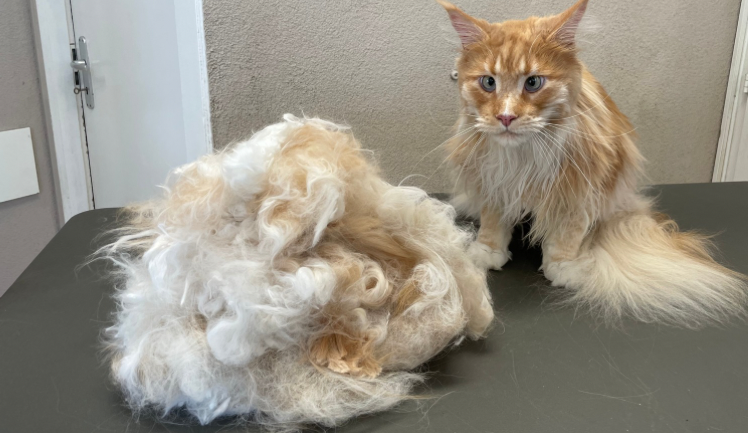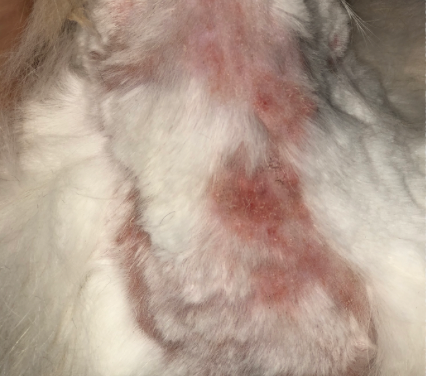Why is it essential to groom your cat regularly?
CAT GROOMING
WHY IS REGULAR GROOMING OF YOUR LONG-HAIRED CAT ESSENTIAL?
In long-haired cats, the undercoat is the lower layer of the coat which, if left untended, accumulates and tangles with the topcoat. It is this accumulation of undercoat that eventually forms knots. These knots, small and discreet at first, can quickly become dense and multiply. If you don’t act in time, they become so tight that they pull on your cat’s skin.

THE CONSEQUENCES OF UNTREATED KNOTS: SKIN THAT CAN NO LONGER BREATHE
When the undercoat tangles and forms knots, it prevents the skin from breathing properly. This is because the skin is covered by a dense layer of matted hair, creating a barrier between air and skin. The result? The skin remains trapped under this mass of hair, which can lead to irritation and inflammation.
If this continues, dermatitis can form between the skin and the knot. These infections can seriously affect your cat’s health.
Grooming your cat helps prevent knots before they form.
Here are the benefits of frequent grooming:
- Removing the undercoat: Good grooming removes dead hairs and excess undercoat, which helps to reduce tangles.
- Skin aeration: When the undercoat is removed, the skin can breathe properly, reducing the risk of dermatitis and other skin problems.
- Comfort: Knots can be painful, especially around sensitive areas like the armpits, belly or behind the ears. Removing them regularly keeps your cat comfortable and free from discomfort.
In addition to avoiding tangles, regular grooming keeps your cat’s coat in excellent condition. A well-groomed coat is shinier and softer. There’s nothing worse for a cat than having a dull, matted coat, while good grooming makes the coat smoother and more cuddly!

Photo of dermatitis after removing the cat’s knots.
HOW CAN YOU TELL IF YOUR CAT NEEDS GROOMING? HERE ARE A FEW SIGNS TO LOOK OUT FOR:
- Your cat has difficulty grooming himself, especially in hard-to-reach areas such as his back or hind legs.
- You feel or see knots in his coat, especially if they are hard or close to the skin.
- His coat becomes dull and you notice an accumulation of dead hairs.
- Your cat seems agitated or uncomfortable when you touch certain areas of his body.
- Your cat regularly vomits hairballs.
Don’t neglect your longhaired cat’s grooming! A healthy coat is not only more beautiful, but also essential for your pet’s health. If you have a cat with a thick undercoat, be sure to have it groomed regularly to avoid tangles and the skin problems that come with them.
Make an appointment today for a complete grooming at O-Poil, and give your cat the care he deserves!
